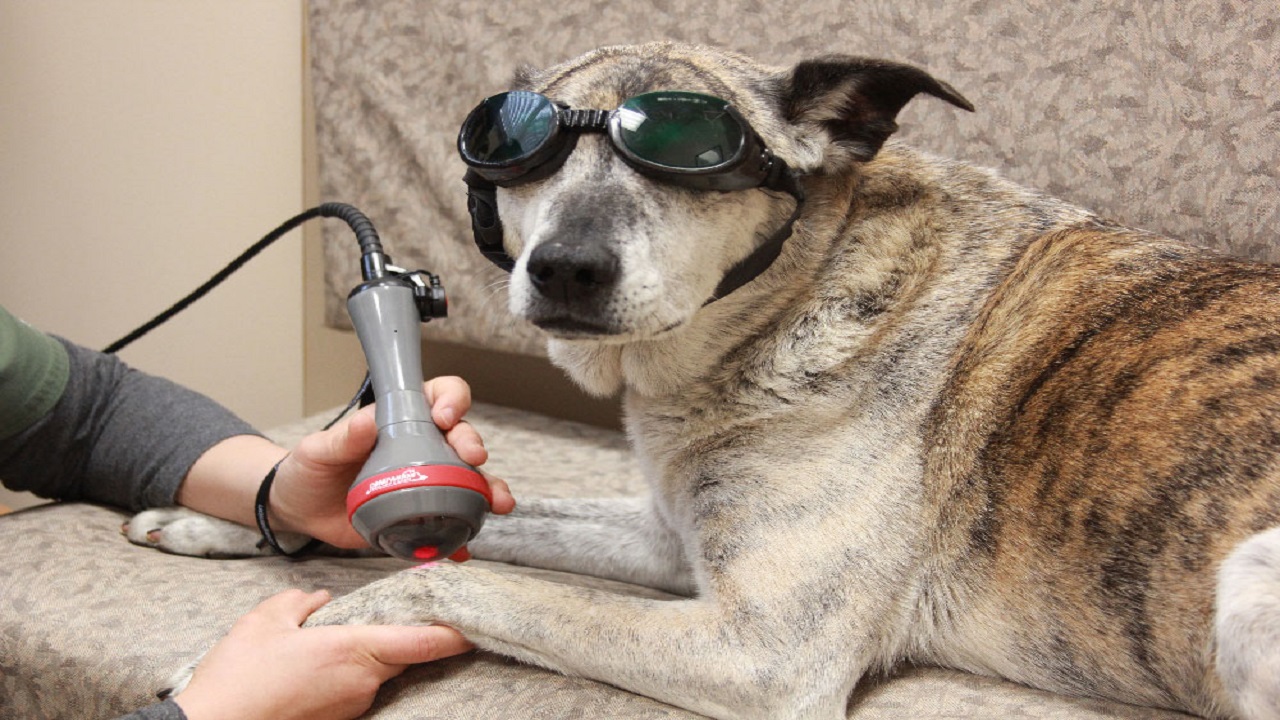In dogs, post-operative pain management is essential to a comfortable and uneventful recovery. Conventional approaches, like medicine, may not always offer sufficient relief and may have unintended consequences. But thanks to developments in veterinary medicine, novel techniques like cold laser therapy are now widely used and provide a secure, non-invasive, and efficient way to treat post-operative pain in companion dogs. In this article, we delve into the benefits and applications of cold laser therapy for dogs in enhancing the recovery of dogs after surgery.
Demystifying Cold Laser Therapy
Low-intensity lasers are used in cold laser therapy, also referred to as low-level laser therapy (LLLT) or photobiomodulation therapy, to promote tissue healing and lessen pain and inflammation. Cold lasers penetrate the skin without causing any damage, in contrast to surgical lasers that heat up and cut tissue. After the cells absorb this light energy, a sequence of biological reactions that aid in healing and reduce pain are set off.
Benefits of Cold Laser Therapy for Post-Operative Pain • Pain Relief
The ability of cold laser therapy to relieve pain without the need for medication is one of its main advantages. Cold laser therapy relieves pain and enhances the dog's general well-being during the healing process by inducing the release of endorphins and decreasing inflammation.
Accelerated Healing
Adenosine triphosphate, or ATP, is produced more readily during cold laser therapy. ATP is necessary for cellular energy. This accelerates the healing process by enhancing cell regeneration and tissue repair, thereby reducing the recovery time after surgery.
Anti-Inflammatory Effects
In dogs, surgical trauma frequently results in inflammation, which causes pain and discomfort. The anti-inflammatory qualities of cold laser therapy help to lessen this reaction, minimizing swelling and enhancing the range of motion in the afflicted area.
Non-Invasive and Safe
Cold laser therapy is non-invasive and does not involve anesthesia, in contrast to invasive procedures or pharmaceutical interventions. It is a gentle and safe treatment option that doesn't have any negative effects and can be used either by itself or in combination with other modalities to improve the dog's recovery.
Applications of Cold Laser Therapy in Post-Operative Care
Pet dogs can benefit from cold laser therapy in a variety of post-operative situations to speed up their recuperation. Typical uses for these include:
Orthopedic Surgeries
Cold laser therapy can help dogs undergoing orthopedic procedures, such as fracture fixation or cruciate ligament repair, by reducing pain and inflammation, accelerating bone healing, and improving joint mobility.
Soft Tissue Surgeries
Cold laser therapy can help reduce pain, swelling, and wound healing following soft tissue surgeries like spaying, neutering, or tumor removal, enabling the dog to return to normal activities sooner.
Dental Procedures
Dogs may experience oral pain and inflammation following dental procedures or extractions. During the healing phase following surgery, cold laser therapy can be used to lessen pain, expedite tissue healing, and enhance oral health.
Skin Surgeries
Following skin surgery for tumor removal or wound closure, dogs may have pain, inflammation, or itching. Reduction of these symptoms, stimulation of tissue regeneration, and avoidance of complications like infection or scarring are all possible with cold laser therapy.
Conclusion
When it comes to treating pet dogs' post-operative pain and discomfort, cold laser therapy is an invaluable resource. Its non-invasiveness and its capacity to lessen inflammation, quicken healing, and relieve pain make it a desirable choice for improving post-operative recuperation. Veterinarians can guarantee their canine patients better outcomes and increased well-being by adding cold laser therapy into post-operative care protocols.

